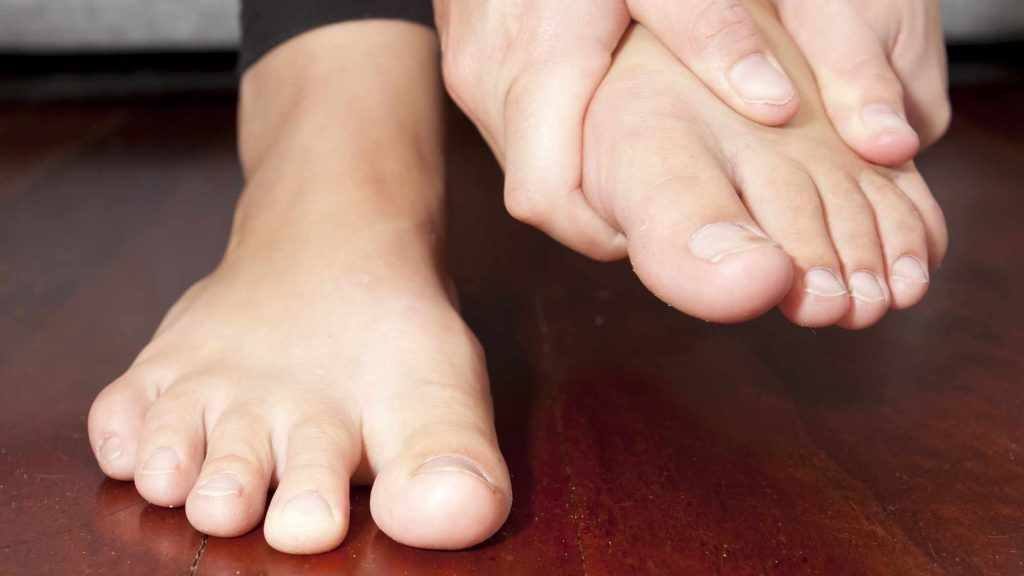-
How can I avoid infected ingrown toenails?

Ingrown toenails are a common condition in which the corner or side of a toenail grows into the soft flesh. The result is pain, redness, swelling and, sometimes, an infection. Ingrown toenails usually affect your big toe.
Often you can take care of ingrown toenails on your own. If the pain is severe or spreading, your health care provider can take steps to relieve your discomfort and help you avoid complications of ingrown toenails.
If you have diabetes or another condition that causes poor blood flow to your feet, you're at greater risk of complications of ingrown toenails.
Ingrown toenail symptoms include:
- Pain and tenderness in your toe along one or both sides of the nail
- Redness around your toenail
- Swelling of your toe around the nail
- Infection of the tissue around your toenail
You can treat most ingrown toenails at home. Here's how:
- Soak your feet in warm water. Do this for 15 to 20 minutes three to four times a day. Soaking reduces swelling and relieves tenderness.
- Place cotton or dental floss under your toenail. After each soaking, put fresh bits of cotton or waxed dental floss under the ingrown edge. This will help the nail grow above the skin edge.
- Apply antibiotic cream. Put antibiotic ointment on the tender area and bandage the toe.
- Choose sensible footwear. Consider wearing open-toed shoes or sandals until your toe feels better.
- Take pain relievers. Over-the-counter pain relievers such as acetaminophen, ibuprofen and naproxen sodium may help ease the toe pain.
Common ingrown toenail causes include:
- Wearing shoes that crowd your toenails
- Cutting your toenails too short or not straight across
- Injuring your toenail
- Having unusually curved toenails
To help prevent an ingrown toenail:
- Trim your toenails straight across. Don't curve your nails to match the shape of the front of your toe. If you have your toenails done at a salon, be sure to tell your pedicurist to trim your nails straight across. If you have a condition that causes poor blood flow to your feet and you can't trim your nails, see a podiatrist regularly to have your nails trimmed.
- Keep toenails at a moderate length. Trim toenails so they're even with the tips of your toes. If you trim your toenails too short, the pressure from your shoes on your toes may direct a nail to grow into the tissue.
- Wear shoes that fit properly. Shoes that place too much pressure on your toes or pinch them may cause a nail to grow into surrounding tissue. If you have nerve damage to your feet, you may not be able to sense if your shoes fit too tightly. Take care to buy and wear properly fitted shoes, preferably from a shoe store specializing in fitting shoes for people with foot problems.
- Wear protective footwear. If your work puts you at risk of injuring your toes, wear protective footwear, such as steel-toed shoes.
- Check your feet. If you have diabetes, check your feet daily for signs of ingrown toenails or other foot problems.
Complications
Left untreated or undetected, an ingrown toenail can infect the underlying bone and lead to a serious bone infection.
Complications can be especially severe if you have diabetes, which can cause poor blood flow and damage nerves in your feet. So a minor foot injury — a cut, scrape, corn, callus or ingrown toenail — may not heal properly and become infected. A difficult-to-heal open sore (foot ulcer) may require surgery to prevent the decay and death of tissue (gangrene). Gangrene results from an interruption in blood flow to an area of your body.
See your health care provider if you:
- Experience severe discomfort in your toe or pus or redness that seems to be spreading
- Have diabetes or another condition that causes poor blood flow to your feet and you experience any foot sore or infection
This article is written by Mayo Clinic Staff and can be found with other health and medical information on mayoclinic.org.







